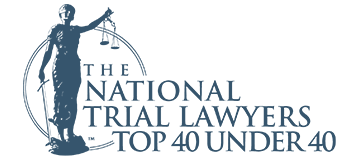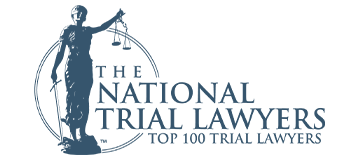Legal Rights at Unmarked Crosswalks: What You Need to Know
Unmarked crosswalks are more than just an overlooked part of our roadways—they play a critical role in pedestrian safety. For both pedestrians and drivers, being aware of your unmarked crosswalk rights is necessary to prevent accidents and avoid potential legal issues. In this article, we’ll define unmarked crosswalks, provide practical examples, discuss the legal implications, and outline the steps you should take if you’re involved in an accident. Our goal at Cooper Elliott is to provide you with necessary information and offer our support should you need legal assistance regarding these often misunderstood intersections.
For a free legal consultation, call (614) 481-6000
Unmarked Crosswalks and Legal Implications
What Are Unmarked Crosswalks?
Unmarked crosswalks are legally recognized pedestrian crossing points at intersections without visible markings like painted lines or signals. These crossings exist by default wherever sidewalks or shoulders meet at an intersection, when there are no explicit markings. Even though there are no visible signs, the space where the sidewalk would naturally continue across the street is considered an unmarked crosswalk.
These unclear pathways are, by definition, present at every intersection, making it imperative for both pedestrians and drivers to recognize and respect them. Despite lacking visible indicators, unmarked crosswalks hold the same legal standing as their marked counterparts.
Pedestrian Legal Rights and Driver Responsibilities at Unmarked Crosswalks
In Ohio, there’s a shared responsibility between pedestrians and drivers at unmarked crosswalks. Pedestrians have the right-of-way when crossing at these spots, but they are also required to exercise care and not suddenly step off the curb into oncoming traffic that presents an immediate hazard. To state plainly, pedestrians should avoid stepping into the path of a vehicle that is too close to stop safely. It is important to understand your unmarked crosswalk rights like these so that you do not make a mistake that could change your life.
That’s why it’s necessary for pedestrians to look both ways and ensure it’s safe before crossing, giving drivers enough time to see them and stop. Drivers, for their part, must yield to pedestrians in unmarked crosswalks and exercise care when approaching intersections, as specified by the Ohio Department of Public Safety. If a driver notices a pedestrian waiting to cross at an unmarked crosswalk, they are obligated to stop and allow the pedestrian to cross safely.
Steps to Take Following a Pedestrian Accident
Immediate Actions to Ensure Safety and Legal Protection
If you find yourself involved in a pedestrian accident at an unmarked crosswalk, taking the right immediate steps is imperative for your safety and legal protection.
- Ensure the safety of everyone involved by moving to a secure location if it’s safe to do so.
- Call emergency services (911) right away.
- Document the scene thoroughly—take photos of the accident site, the positions of the vehicles, and any visible injuries.
- You might also consider filling out a Motor Vehicle Accident Report in Ohio.
Be sure to gather contact information from any witnesses and exchange insurance details with the driver involved. It’s crucial to seek medical attention promptly, even if you feel fine initially, because some injuries may not show symptoms immediately. Reporting the incident to the police is also necessary, as an official report can serve as valuable evidence in any future legal proceedings.
Seeking Legal Advice and Compensation
Once you’ve addressed immediate safety concerns and received medical attention, it’s necessary to seek legal advice to protect your rights and pursue fair compensation. An experienced pedestrian accident lawyer like those at Cooper Elliott can provide invaluable guidance in handling Ohio’s complex legal system, especially when dealing with accidents at unmarked crosswalks. The distinctions between marked crosswalks vs unmarked crosswalks can affect the legal responsibilities and outcomes in your case. An attorney can assess the strength of your case, gather crucial evidence, and negotiate with insurance companies on your behalf.
For example, if a driver claims they didn’t realize they were at an unmarked crosswalk, your attorney could use legal definitions, traffic camera footage, or witness statements to demonstrate the driver’s negligence. Under Ohio’s comparative negligence system in pedestrian accidents, compensation is adjusted based on the degree of fault assigned to each party involved. Imagine a pedestrian who crosses the street while distracted by their phone and doesn’t notice a speeding car approaching. If an accident occurs, both the pedestrian and the driver may share responsibility—the pedestrian for not paying attention and the driver for exceeding the speed limit.
If it’s determined that the pedestrian is 40% at fault and the driver is 60% at fault, and the total damages amount to $50,000, the pedestrian would receive $30,000 after subtracting their percentage of fault. A skilled attorney can help maximize your compensation by ensuring all relevant factors are considered. This might include not only immediate medical expenses but also long-term care costs, lost wages, and pain and suffering. This is why it is so important to understand your unmarked crosswalk rights.
Click to contact our personal injury lawyers today
Conclusion
Being aware of your unmarked crosswalk rights and responsibilities is critical for both pedestrians and drivers in Ohio. These frequently overlooked intersections carry significant legal importance and demand attentiveness from everyone to ensure safety. By being aware of the laws related to unmarked crosswalks and taking appropriate steps if an accident occurs, you can help protect yourself and others from harm and legal complications. If you’ve been in an accident and have a personal injury, you’re unsure about your legal standing, or need further assistance, contact us at Cooper Elliott to discuss how we can help you address these challenges effectively.
Complete a Free Case Evaluation form now
Frequently Asked Questions
What are the legal rights at unmarked crosswalks?
Pedestrians in Ohio generally have the right-of-way at unmarked crosswalks, but this right comes with responsibilities. Pedestrians must exercise care and should not step into the roadway suddenly in a way that creates an immediate hazard for oncoming vehicles. Drivers are legally required to yield to pedestrians in these crosswalks, just as they would at marked crossings.
What steps should I take after a pedestrian crash?
If you’re involved in a pedestrian accident, your first priority should be safety—move to a secure location if you can and call emergency services. Document the scene carefully by taking photos and collecting contact information from witnesses and the driver. Seek medical attention right away, even if your injuries appear minor.
How does comparative negligence affect pedestrian accident claims?
Comparative negligence in Ohio can greatly affect the outcome of pedestrian accident claims. Under this law, if you’re found to be partially at fault for the accident, any compensation you receive may be reduced by your percentage of fault. For instance, if you are deemed 20% responsible for the accident and the total damages are $100,000, you would receive $80,000 after the reduction.
What driver responsibilities exist at unmarked crosswalks?
At unmarked crosswalks in Ohio, drivers have important responsibilities. They must yield the right-of-way to pedestrians who are crossing or about to cross the road. Drivers should approach these intersections cautiously, slow down if needed, and be prepared to stop.
Call or text (614) 481-6000 or complete a Free Case Evaluation form
















































